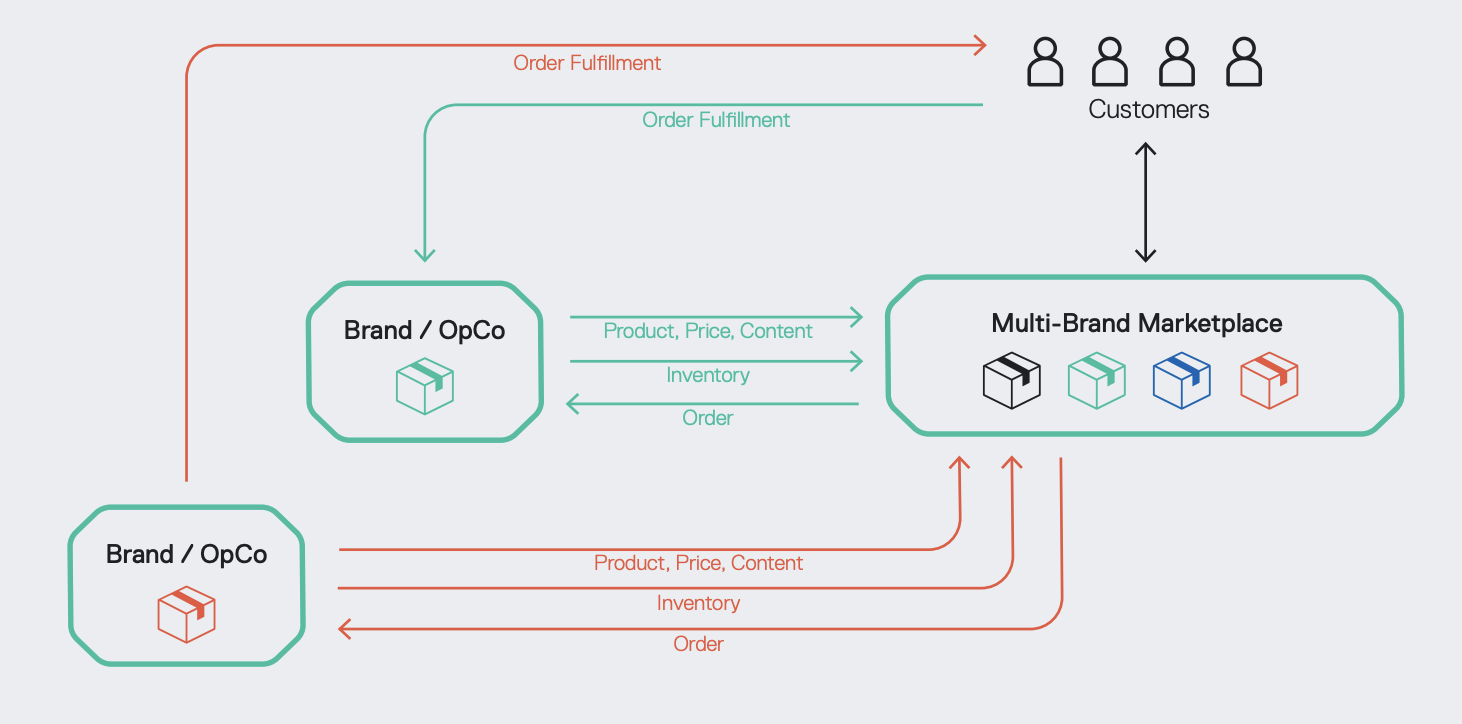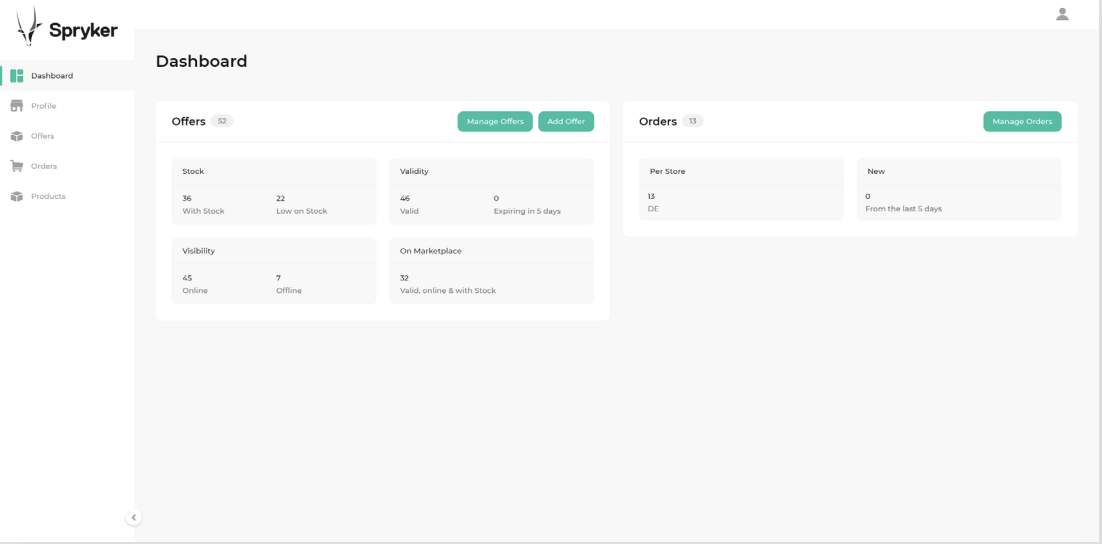Multi-Brand Selling for Conglomerates
Increase revenue opportunities, improve brand alignment, and benefit from new customer insights with a multi-brand marketplace.Status Quo
We’ve witnessed immense change over the last couple of years, and no industry has been left untouched. For large conglomerates, the most notable evolution has been the change in customer expectations.
A combination of the global covid-19 pandemic and an increase in digital technology means that buyers from all spectrums demand a sleek, unified shopping experience. And that’s not just B2C. B2B buyers, increasingly digital natives themselves, expect a digital-first, convenient experience, even for high-value or complex orders.
How does this impact multi-brand conglomerates?
As companies that own and operate multiple brands, either within the same industry or even across different sectors, the challenge to deliver what customers are looking for increases tenfold. Brands operating under the same parent company often run entirely independently of one another. This means completely different tech stacks, little to no alignment on customer data usage, and possible legal barriers standing in the way of creating synergies and sharing information.
The opportunity that multi-brand conglomerates have from aligning their brands is enormous. With their size and resources, they can achieve economies of scale, maximize market coverage, and unite all disparate brands together to create a world-class customer experience. How? Through a multi-brand Enterprise Marketplace.
This works by providing a solution that combines the offerings of independent brands or companies into one platform while keeping their existing technology ecosystems intact. It allows brands to align and share customer insights, creating new revenue streams and increasing customer lifetime value for the parent company.
Learn more about how multi-brand conglomerates can benefit below.
Challenges for Multi-Brand Conglomerates
- Where multiple brands operate under the same parent company, there is often a lack of alignment on leveragable customer data or technology stacks. This results in lost revenue opportunities and inefficiencies.
- There may be legal barriers between sister brands which prevent information sharing and synergy, making brand alignment difficult.
- Integrating multiple brands (and their processes) into a cohesive organization can be disruptive, costly, and complex.


A multi-brand Enterprise Marketplace is a ‘first-party’ marketplace, meaning that the marketplace operator (the conglomerate/parent company) owns the marketplace and provides the platform, while the merchants (the separate brands) act as third-party sellers.
The parent company as the operator therefore has ultimate control over the branding of the vertical marketplace, which sister companies it onboards, and what products they are allowed to sell.
In a marketplace platform back-end, there will be an operator portal known as the ‘Back Office’ where the umbrella company can have access and an overview of all sales. The operator can check merchant’s profiles and can approve, decline or edit profiles.
The merchants then utilize their own back-end, known as the ‘Merchant Portal’ where they can add, edit, and manage products and information pages. Each merchant operates independently from each other and from the operator, to save time and resources.

Each brand acting as a merchant will keep their existing fulfillment and supply chain processes, as orders are split by merchants and individually fulfilled. This makes it very easy and quick to onboard new brands, and doesn’t interrupt current processes.
For all brands involved, the marketplace acts as an additional revenue stream, and works alongside their existing sales channels, rather than disturbing current business.
Once the multi-brand Enterprise Marketplace is up and running, umbrella companies can then decide whether to extend the marketplace to more third-party sellers within the niche vertical from other organizations.
This further increases the product offering for your customers, and extends your reach, but does come with added management and due diligence, since these brands will not be ‘pre-approved’ like the businesses already owned by the parent company.

Competitive advantage
- Establish a one-stop shop for a specific vertical, gaining market share
- Control and push brands and their products based on revenue insights, thereby optimizing performance
- It’s possible to launch quickly with a minimum viable product (MVP) because all brands are already ‘pre-approved’, meaning you can go to market faster
Spryker Capabilities
- Enterprise Marketplace
- Merchant Portal
- Merchant and Operator Dashboards
- Marketplace Storefront
- Offer and Product Management
- Spryker OMS (Order Splitting and Routing)
Enablement Services
- Business Model Workshop
- Operating Model Sparring
Technology Partners
- Minubo
- evipay
- Balance
- Vonage
- Usercentrics
- Infobip
About Spryker
Spryker is the leading global composable commerce platform for enterprises with sophisticated business models to enable growth, innovation, and differentiation. Designed specifically for sophisticated transactional businesses, Spryker’s easy-to-use, headless, API-first model offers a best-of-breed approach that provides businesses the flexibility to adapt, scale, and quickly go to market while facilitating faster time-to-value throughout their digital transformation journey. As a global platform leader for B2B and B2C Enterprise Marketplaces, IoT Commerce, and Unified Commerce, Spryker has empowered 150+ global enterprise customers worldwide and is trusted by brands such as ALDI, Siemens, ZF Friedrichshafen, and Ricoh. Spryker is a privately held technology company headquartered in Berlin and New York backed by world class investors such as TCV, One Peak, Project A, Cherry Ventures, and Maverick Capital. Learn more at spryker.com.


